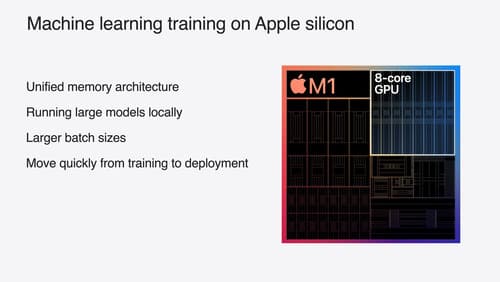How can I use mistral on device?
Asked on 2024-06-14
8 searches
To use Mistral on device, you can follow these steps:
-
Model Training: Start by defining the model architecture and training the model using libraries such as PyTorch or TensorFlow. You can take full advantage of Apple silicon and the unified memory architecture on Mac for this purpose.
-
Model Conversion: Convert the trained model into Core ML format using Core ML tools. These tools also allow you to optimize the model representation and parameters to achieve great performance while maintaining good accuracy. Techniques such as quantization and efficient key-value caching can be used to optimize the model.
-
Model Integration: Integrate the converted model into your app using Apple frameworks. Core ML provides a unified API for performing on-device inference across a wide range of machine learning and AI model types. The Core ML framework optimizes hardware-accelerated execution across the CPU, GPU, and neural engine.
For a detailed walkthrough, you can refer to the session Explore machine learning on Apple platforms.
Relevant Sessions
- Explore machine learning on Apple platforms
- Platforms State of the Union
- Bring your machine learning and AI models to Apple silicon
- Deploy machine learning and AI models on-device with Core ML
These sessions provide comprehensive guidance on training, converting, and deploying machine learning models, including Mistral, on Apple devices.

Train your machine learning and AI models on Apple GPUs
Learn how to train your models on Apple Silicon with Metal for PyTorch, JAX and TensorFlow. Take advantage of new attention operations and quantization support for improved transformer model performance on your devices.

Deploy machine learning and AI models on-device with Core ML
Learn new ways to optimize speed and memory performance when you convert and run machine learning and AI models through Core ML. We’ll cover new options for model representations, performance insights, execution, and model stitching which can be used together to create compelling and private on-device experiences.

Platforms State of the Union
Discover the newest advancements on Apple platforms.
